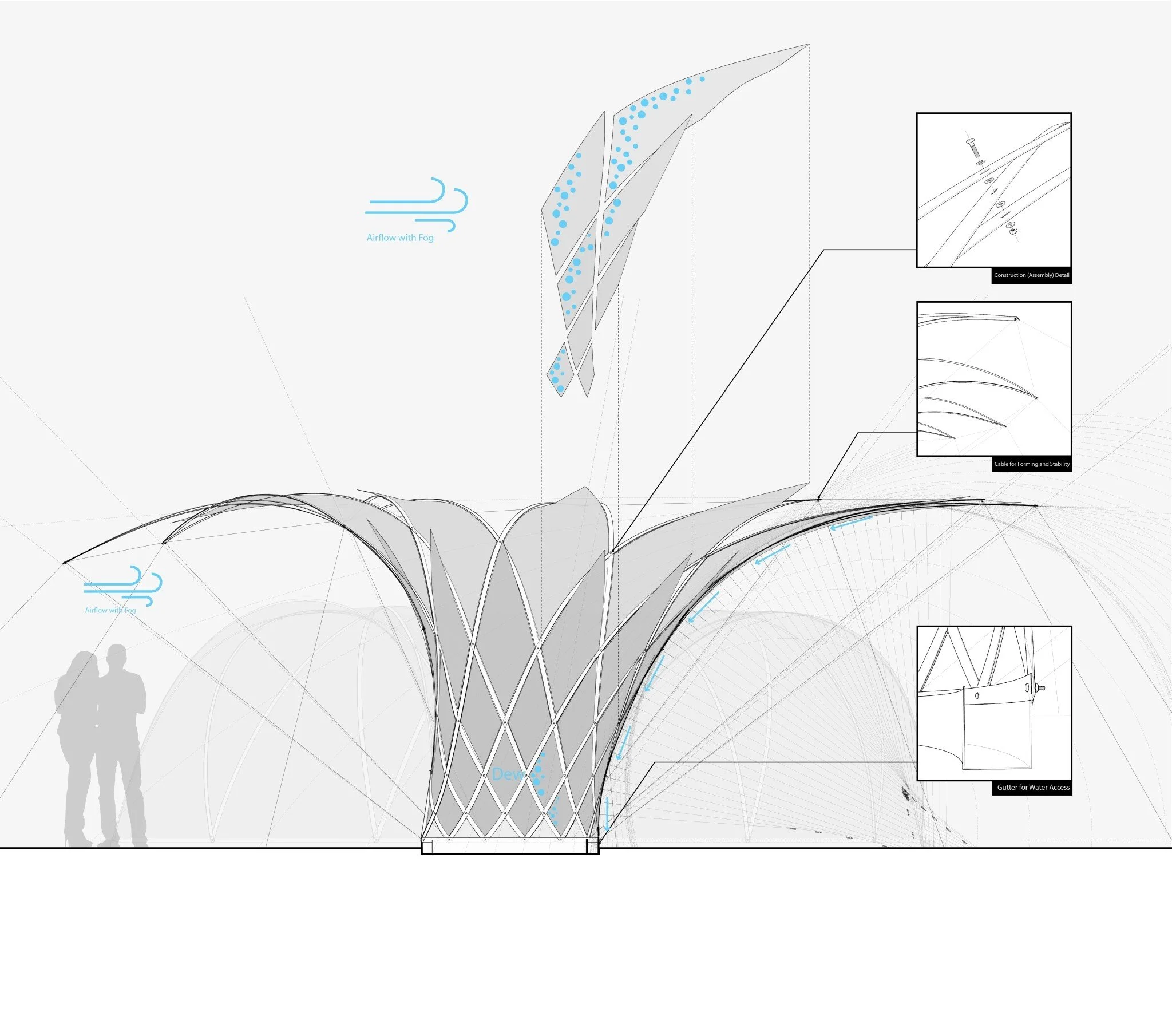Core Faculty: Jason Kelly Johnson + Carlos Sabogal
Date: Spring 2021
“The dream recedes, but leaves a residue.” ― William Gibson, Virtual Light (The Bridge Trilogy) “The whole value of solitude depends upon oneself; it may be a sanctuary or a prison, a haven of repose or a place of punishment, a heaven or a hell, as we ourselves make it.” ― John Lubbock, Peace and Happiness
BRIEF
The studio explores speculative futures for the western section of the San Francisco-Oakland Bay Bridge. Similar to the recently replaced eastern section, the western bridge will soon become obsolete. Instead of tearing it down, the studio explores the reuse of the bridge’s superstructure as a social, cultural, and ecological catalyst for the region.
PRECEDENT
Bridges have a long history in civilization. The Inca culture constructed long-span rope suspension bridges that could be installed in a matter of days. They considered bridges more important than building massive stone structures, in some cases, could take decades to build. Their long-span fiber suspension bridges connected 25,000 miles of road (The Inca road system - Qhapaq Ñan “beautiful road”) and were longer than those of the Roman Empire. Although these bridges had to be regularly maintained, the practice became an essential ritual to their civilization.
INCENTIVE
The Sanctuary studio radically rethinks how the Bay Bridge could be re-utilized in the future.
Could the bridge become more than an elevated highway? Could it be a sanctuary or refuge for people, plants or animals? Could it become a public space, a place that bridges communities, inspires awe, ritual or meaning?
STRUCTURE
The studio will begin by exploring the introduction of hybrid public programs to the bridge’s superstructure: parks, museums, community spaces, edible gardens, shared spaces for living, working, farming, collaborating and playing. Second, the studio will develop ways for the bridge to harness energy from the sun and wind, collect water, utilize a renewable material palette, and systems that will work in cadence with natural ecosystems. Third, the studio will explore how the bridge might continue to weave the Bay Area together through emerging modes of public transportation and personal mobility.
ADDITIONAL QUESTIONS
How can a shift in thinking about transportation infrastructure, from mono-functional corridors to diverse, layered, heterogeneous spaces, help make the city more liveable and active? What are the new possibilities for integrating non-traditional urban design, art, technology, ecology, architecture, landscape, experimental modes of participation and collaboration, inclusion and public discourse? What emerges if we expand the definition of what public space is, where it can be, and who it might serve? After surviving a year marked by social isolation, division and inequality, how can visions for the new Bay Bridge suggest a way forward for the city, region and civilization itself?
APPROACH
The studio will utilize advanced computation design, visualization and representation tools. As a method of exploring and iterating through many possible futures, we will emphasize the use of parametric modeling and simulation softwares, alongside emerging augmented reality tools. A hybrid studio component will allow students to physically engage CCA’s digital fabrication tools.
“Empires of the future will be empires of the mind.” ― Winston Churchill
“The future is already here – it's just not evenly distributed.” ― William Gibson
Event: Architecture Division Pop-Up Exhibition
Students: Mason Denton, RJ Hafiz, Hsiao Chun Hou, Jung Yung Kim, Maryam Liaghatjoo, Hsuan Fu Liu, Leonel Miranda, David Rico-Gomez, Ashley Rodriguez, Eve Tobey














































